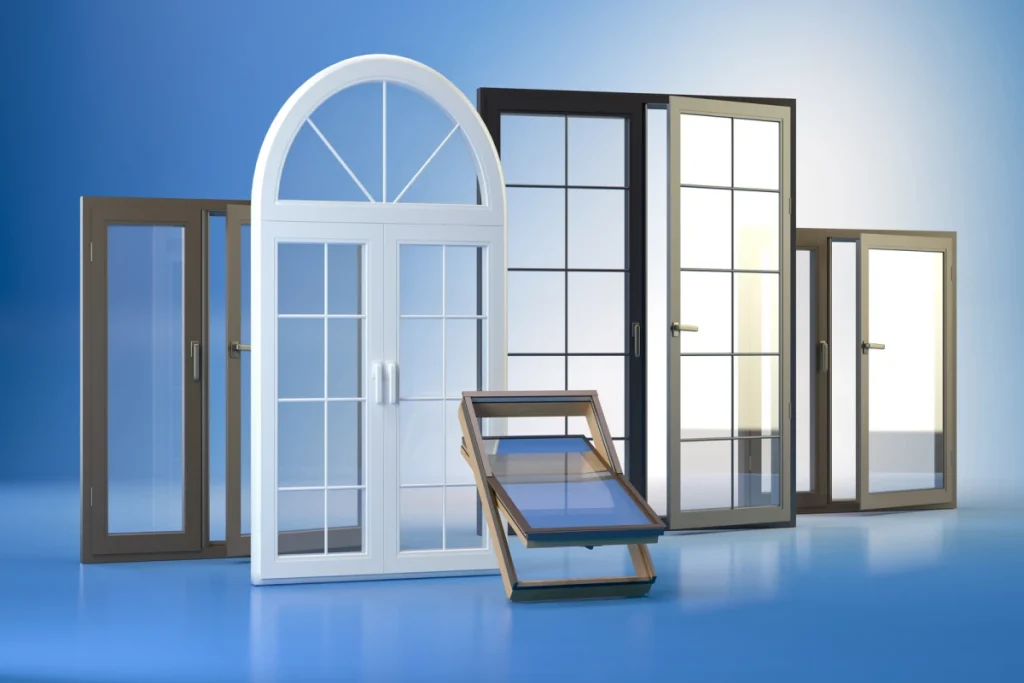Windows are more than just openings in a wall—they define how a building looks, performs, and endures over time. When selecting the right window frames types, contractors, architects, and business owners need to consider not only design but also durability, cost-effectiveness, and energy efficiency. Making the right decision ensures a balance between aesthetics and performance, which is essential in modern construction projects.
Why Window Frames Are Essential in Construction
A window is incomplete without its frame. Beyond simply holding the glass in place, frames influence:
Energy efficiency – Insulation properties determine how much heat or cold passes through.
Longevity – Some materials withstand moisture, corrosion, and weather better than others.
Visual impact – Frames contribute significantly to a building’s style and appeal.
Safety and security – Sturdy materials prevent easy break-ins and structural failure.
Maintenance levels – Choosing wisely can minimize long-term upkeep costs.
Understanding these factors before making a purchase ensures fewer problems and better project outcomes.
Common Materials Used in Window Frames
Window frames are available in several materials, each offering unique benefits. Here’s an overview:
1. Aluminum Window Frames
Aluminum is one of the most popular materials for modern construction. It is:
Durable and long-lasting
Lightweight yet strong
Resistant to rust, pests, and moisture
Minimal maintenance required
Ideal for large commercial and residential projects
One of the biggest advantages of aluminum frames is their sleek, minimalistic appearance, making them perfect for contemporary architectural designs.
2. Wood Window Frames
Wood frames have been used for centuries and are still appreciated for their natural beauty.
Warm and traditional appearance
Excellent insulation properties
Customizable with paints and stains
However, wood requires more care. Regular sealing or painting is necessary to prevent rot, warping, or pest damage.
3. Vinyl (uPVC) Window Frames
Vinyl frames are widely chosen for cost-effective projects.
Affordable and versatile
Energy efficient due to natural insulation
Moisture resistant
Low maintenance
While vinyl is a great budget-friendly choice, it may not offer the same strength and lifespan as aluminum or wood.
4. Composite Window Frames
Composite frames combine materials—often wood and aluminum—for enhanced durability.
Strong and versatile
Better insulation than aluminum
Lower maintenance than woo
This hybrid option is more expensive but provides excellent performance.
How to Choose the Right Window Frame Type
When evaluating different window frames types, decision-makers should consider several key factors:
Climate Conditions – In humid or coastal regions, aluminum or vinyl frames are preferred over wood to resist moisture damage
Building Purpose – Commercial high-rise buildings often require aluminum for strength and lightweight properties.
Budget – Vinyl is more economical, while wood and composites are higher-end.
Aesthetic Preferences – For a sleek, modern design, aluminum is ideal; for traditional charm, wood is unmatched.
Maintenance Willingness – Aluminum and vinyl need less upkeep, while wood requires regular attention.
Energy Efficiency and Sustainability
Today’s construction industry places heavy emphasis on sustainability. The right window frame type can significantly reduce energy consumption.
Aluminum frames with thermal breaks prevent heat transfer, improving efficiency.
Vinyl and composite frames naturally insulate better than metal.
Wood frames excel in insulation but require responsible sourcing to remain eco-friendly.
Choosing energy-efficient frames not only benefits the environment but also reduces long-term operational costs for building owners.
Window Frame Styles and Their Applications
Beyond materials, styles play a role in performance and design.
Casement frames – Hinged at the side, open outward, excellent ventilation.
Sliding frames – Practical for limited spaces.
Fixed frames – Do not open, used for large glass walls or display windows.
Double-hung frames – Both top and bottom panels can move, common in residential spaces.
Matching style with building purpose enhances both appearance and function.
Maintenance Considerations
Each material comes with its own maintenance requirements:
Aluminum – Occasional cleaning; resistant to corrosion.
Wood – Requires regular sealing or painting.
Vinyl – Simple cleaning with soap and water.
Composite – Low-maintenance, similar to aluminum.
Investing in the right frame reduces maintenance costs over decades.
Final Thoughts
Selecting the right window frame type is about balancing design, durability, cost, and energy efficiency. For commercial projects that demand strength, style, and longevity, aluminum frames are often the best choice. For traditional aesthetics, wood frames remain a timeless option, while vinyl and composite provide practical alternatives.
Understanding the different parts of a window helps decision-makers choose wisely and ensures that every project stands the test of time. Whether you’re working on a residential complex or a large-scale office building, choosing the right window frames can make all the difference in performance, comfort, and value.
